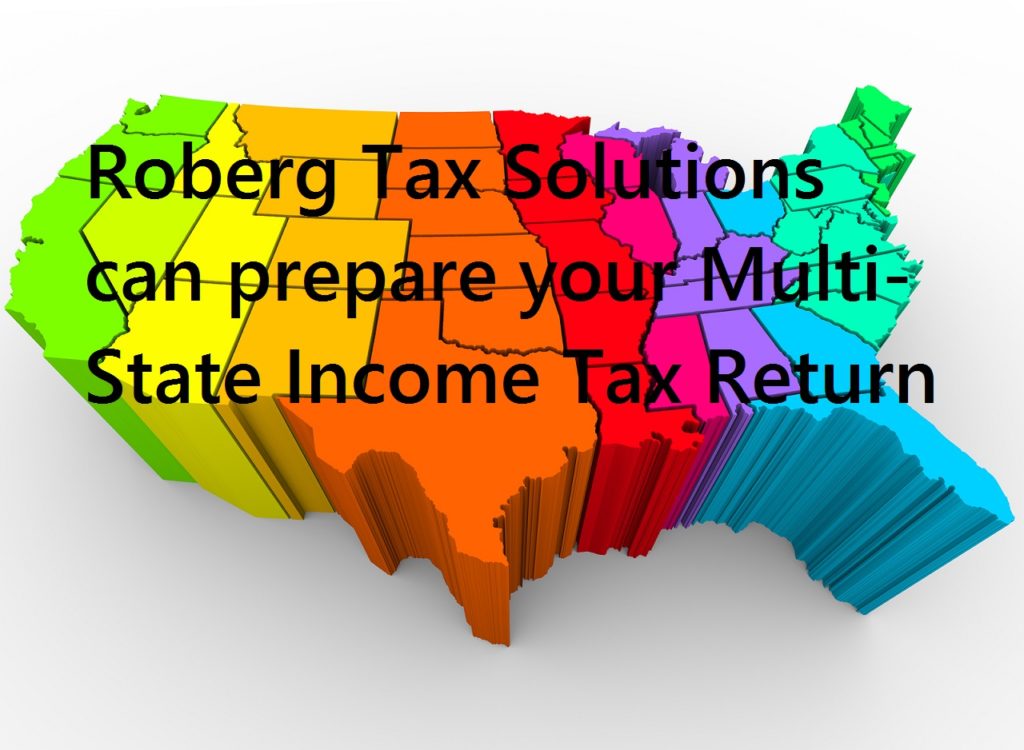
It isn’t always easy preparing your taxes when you’ve worked in more than one state. We can help you get it right!
I get many calls from people who prepared their own returns with two or more states and they all say something pretty similar, “I did the return, the federal is okay but the state just doesn’t seem right.” Then I ask, “Do you owe way more than you think you should?” “Yes, how did you know?” I do this for a living. The quick answer is to check to see if you took a “credit for taxes paid to another state”, that’s usually where the problem is.
Normally, I would have put that at the end of the blog post, but it’s such a common problem that I figured it needed to go first. Quick answer and you’re done. If you need more information, I’ll start from the beginning.
Two states can usually be handled by most of the major tax software companies with no problem. Remember the credit for taxes paid to another state and you should be good. On the other hand, three or more states can send your software into a tizzy. Even with my professional grade software, I still have to compute numbers by hand and manually input them into the program. If you’re dealing with three or more states, spend the money on a professional. It’s a good idea to ask, “Have you ever done a California return before?” (Or Ohio, or North Carolina, or whatever.) Experience helps.
Back to the two states: There are two situations where you could have two state returns. One would be you moved from one state to another, for example moving from Indianapolis to Chicago for a job. The other would be where you live in one state but work in a different state, for example living in St. Louis, Missouri but working across the river in Alton, Illinois. These two types of situations use different forms.
Moving: When you move from one state to another, you’ll be filing your two state returns as a “part-year resident”. You’ll be completing paperwork that says how long you lived in the state, what your earnings were for the state, etc. You should only be taxed on the income that you earned while you lived and work in the state. If you withheld properly, your taxes should come out normal, no big refunds, nor big balance dues. Most of the time in a case like this, you won’t be filing a “credit for taxes paid to another state” because the “part year resident” return will handle you income allocations. (Most of the time—there’s 50 states and they all have different rules, so in some cases you’ll still be doing the credit for taxes paid to another state.)
Living in one state and working in another: this situation is a little different. You will be a “resident” of the state you live in and a “non-resident” of the state you work in. The state you work in is the state your company is going to withhold taxes from. But the state you live in is going to tax your income too. This is where it’s really important to remember the credit for taxes paid to another state, because if you miss taking that credit your tax bill could be enormous. Sometimes, the tax bill is still pretty large even when you’ve done everything right. For example, here in Missouri our state income tax rate is 6%. Next door in Illinois it’s 3% (although it’s moving up to 5% this year.) If you live in Missouri and work in Illinois, you’re going to get hit with a pretty harsh state tax bill unless you had Missouri taxes withheld or paid estimated taxes.
Here’s some other tips that will help you with your multi-state return:
1. Always do the federal return first. Don’t start the state returns until the federal is done and you feel that it’s correct. If you have to go back and make changes to the federal, your state numbers will be off.
2. Non-resident income: that’s wages that you were paid in a state you didn’t live in. It also includes self-employment performed in the state.
3. Resident income: the state you live in will tax everything, in addition to your wages, it will tax your pension, interest, investment income, everything.
4. Moving expense deduction-always goes to the state that you moved to, not the state that you moved from.
This is a pretty quick and dirty summary of multi-state tax returns. If these tips don’t solve your problem, do call us and get some help. They’re not always easy to handle and we do this for a living.
